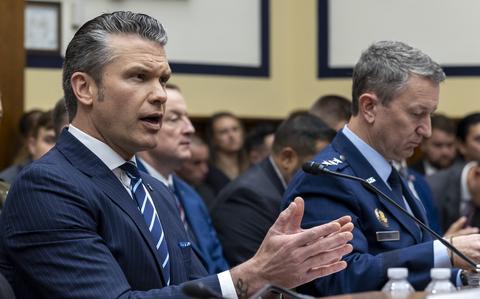Pentagon Prepares for the Unexpected: Contingency Plans Revealed for Greenland and Panama?

In a surprising turn of events, Defense Secretary Pete Hegseth's recent testimony before lawmakers has sparked considerable debate and speculation regarding the Pentagon's preparedness for unconventional scenarios. When pressed about the existence of contingency plans involving military action in Greenland and Panama, Hegseth skillfully sidestepped a direct answer, stating that the Department of Defense routinely develops plans for “any particular contingency.”
This ambiguous response has fueled intense scrutiny and raised questions about the scope and nature of these potential plans. While Hegseth's explanation is standard practice for defense officials – emphasizing the need to be prepared for a wide range of possibilities – the specific mention of Greenland and Panama has amplified concerns and ignited a flurry of online discussion.
Why Greenland and Panama?
The inclusion of Greenland and Panama in this hypothetical scenario is particularly noteworthy. Greenland, an autonomous territory within the Kingdom of Denmark, is strategically significant due to its geographic location and potential access to vital shipping routes. Its vast natural resources, including rare earth minerals, have also attracted increasing global attention.
Panama, on the other hand, is renowned for its strategic Panama Canal, a critical waterway for international trade. Securing the canal's uninterrupted operation is of paramount importance to global commerce, and any potential threat to its stability would undoubtedly warrant a robust response.
The Pentagon's Stance: Preparedness Above All
The Defense Department's approach to contingency planning is rooted in the principle of preparedness. Military strategists routinely develop plans to address a myriad of potential threats, ranging from natural disasters to geopolitical conflicts. These plans are not necessarily indicative of imminent action but rather serve as frameworks for responding effectively to unforeseen circumstances.
“We develop plans for any particular contingency,” Hegseth reiterated, emphasizing that the Pentagon’s focus is on maintaining readiness and ensuring the nation's security.
Public Reaction and Political Implications
The revelation of these contingency plans, even in a preliminary form, has triggered a wave of reactions across the political spectrum. Some critics have accused the Pentagon of engaging in unnecessary and potentially provocative planning, while others have defended the department's proactive approach to national security.
The incident has also prompted calls for greater transparency regarding the Pentagon's contingency planning processes. Lawmakers on both sides of the aisle have expressed a desire to understand the rationale behind these plans and to ensure that they align with U.S. foreign policy objectives.
Looking Ahead: A Complex Landscape
As geopolitical tensions continue to rise and the global landscape becomes increasingly complex, the need for robust contingency planning remains paramount. While the specifics of the Pentagon's plans for Greenland and Panama remain shrouded in secrecy, the incident serves as a reminder of the challenges and uncertainties that lie ahead. The ongoing debate surrounding these plans is likely to continue, underscoring the importance of open dialogue and informed decision-making in matters of national security. The focus will likely be on ensuring these plans remain purely theoretical exercises and do not escalate into real-world actions without proper justification and oversight.






